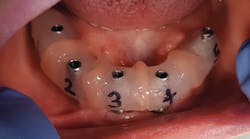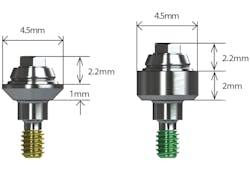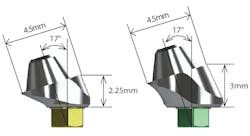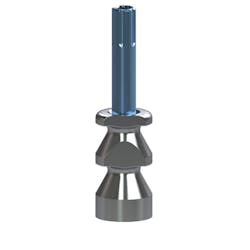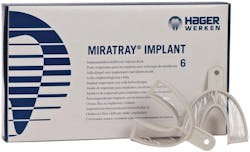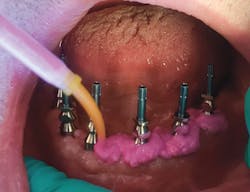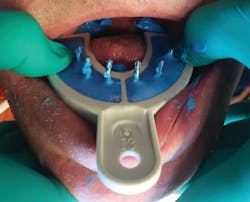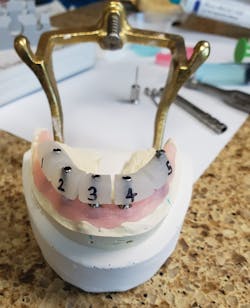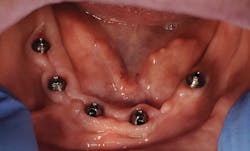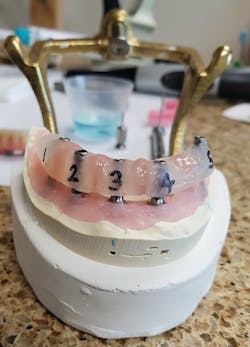Obtaining accurate full-arch impressions using multiunit impression copings
When it comes to full-arch zirconia bridges, the passive fit of the restoration is imperative to the long-term survival of the case. But how can we reliably and predictably obtain these results? Through the years, I have tried many impression techniques and even more materials in search of the perfect full-arch impression.
One way to make this task easier is to ensure that the implants are parallel with each other so that the path of removal of the impression copings does not bind in the implant and cause distortion. Keeping things parallel is not always possible, however, due to the angulation of the bone, especially in the premaxilla and the anterior mandible.
Multiunit abutments, such as those from BioHorizons, have a 45-degree conical connection (figure 1) that features a self- centering 22.5-degree angulation correction to help ensure a passive prosthetic fit and restorative flexibility to divergent implants. The multiunit abutment also provides the greatest range of angulation correction in both 17- and 30-degree offsets (figure 2). The placement of the multiunit abutments at the time of implant placement also allows for an impression process that is supragingival, which leads to less movement through the tissue, less discomfort for the patient, and quicker impression appointments.
When taking an impression of the multiunit abutment, I use the direct pickup coping from BioHorizons (figure 3). This has been the easiest and most predictable impression I have found. The setup for taking these impressions is very simple and made easy with the MiraTray implant tray from Hager Worldwide (figure 4). What I like about the MiraTray is that I can see through the material as I try in the trays to ensure the proper size is used.
I seat the direct pickup copings hand-tight onto the multiunit abutment, syringe a light-body polyvinyl siloxane (PVS) around the coping, and then fill the MiraTray with medium or heavy-body PVS as well (figure 5). Seating the MiraTray is what makes it indispensable in the full-arch impression. The long screws of the direct pickup coping poke through the material on the tray, allowing easy access for the screw while keeping the material confined (figure 6). The tray is kept in place as the impression material sets up. Once it is ready, each of the copings must be unscrewed until the impression is released from the multiunits.
The impression should be checked for voids, inaccuracies, or distortion, but it has been my experience that this impression is very accurate; I have found no reason to lute the impression copings together with composite bridges. The impression can now be sent to the lab for mounting. I always have the lab return the master cast with the verification jigs.
Use of verification jigs like these from ProSmiles Dental Studio at the time of a wax try-in is necessary to ensure that your initial impression was indeed accurate and that what exists in the mouth is picked up and set on the master cast to verify accuracy and passive fit (figure 7). Remember that the multiunit should be sized so that it is not too subgingival, and the edge of the conical connection should be right at the level of the soft tissue (figure 8).
The verification jigs are then transferred to the mouth, where I use a hard, acrylic material, such as Voco’s Ufi Gel Hard, to lute the jigs into place (figure 9). Once the pickup material has set up, the luted jigs can be tried on the master cast. If you have a passive fit, the screws will easily go into position, and there will be no gaps that you can see between the housings and the multiunit abutment (figure 10).
There is more than one way to take a full-arch impression. I have found that if you take your time, use authentic connection parts, and use the MiraTray system, you are more likely to get the accuracy and results you are looking for the first time. Being efficient in how you go about this will only come with repetition of the procedure and use of the right materials.
Author’s disclosure: Dr. Moody is a paid consultant for BioHorizons and ProSmiles Dental Studio.
